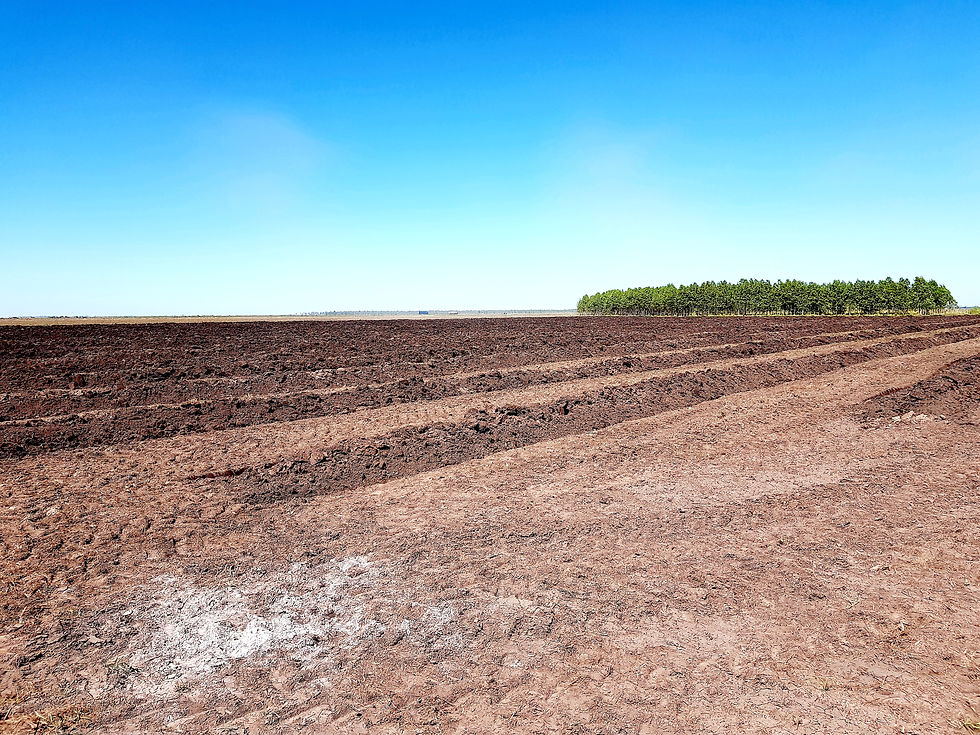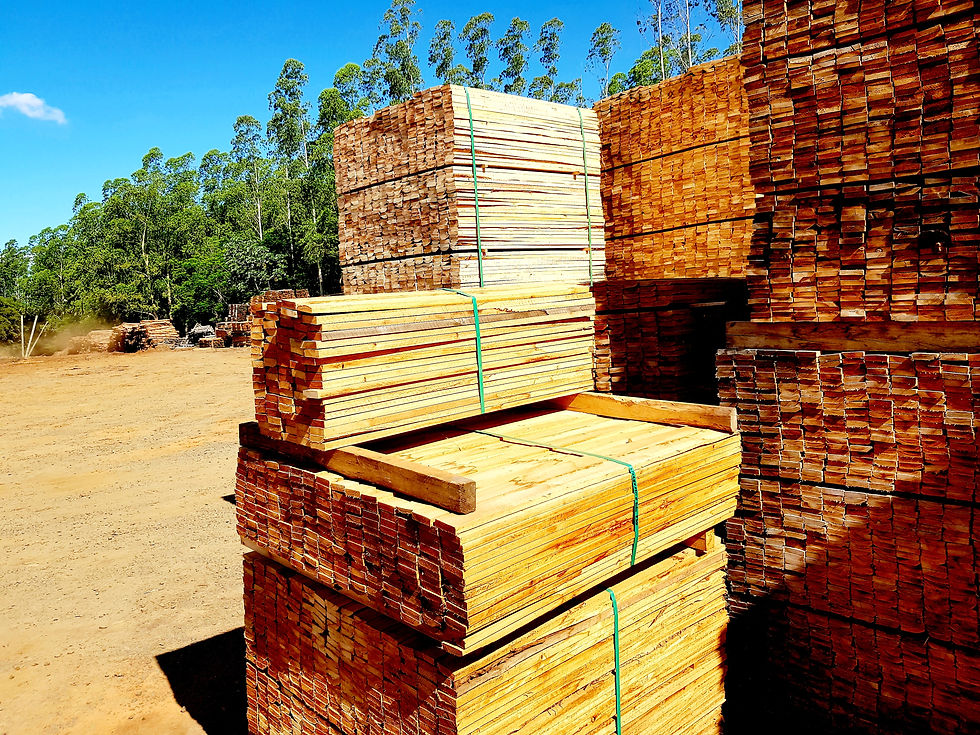Aufforstung 2: Paraguay
- Bernd
- Jan 16, 2024
- 4 min read
Updated: Jan 18, 2024
What distinguishes Americans:
If you fail,
they keep getting up
and try again.

The dream of the jungle
What do you think when people talk about reforestation in South America? Probably dense jungle, rainforest, lush greenery. Unfortunately I have to disappoint you. You are on the wrong track. The second largest forest in South America after the rainforest in Brazil stretched from Paraguay through Argentina and Bolivia. Eastern Paraguay alone consisted of 80% rainforest. Today it is only 10%. The global hunger for wood is gigantic. When we talk about rainforest, we are talking about primary forest, i.e. natural forest areas with a high diversity of plants and animals. These areas must be preserved and protected. And this is exactly where reforestation comes into play.

The need for wood as a raw material should be met through reforestation. No new rainforests are created here. However, commercial forests grow to protect primary forests. This is roughly what the scenarios of various internationally active reforestation companies are. In Germany, Miller Forest, among others, offers its services to interested investors. A not risk-free investment.
This is exactly where I've been invested for 14 years because the media's paralyzing doom mentality is bothering me. I looked for pragmatic solutions within my means and not the endless apocalyptic forecasts of the big media companies.
Miller Afforestation, Estancia Curuzú Main Depot, Paraguay

Around midday our group reaches the guesthouse of a German emigrant, the Isla del Bosque. The four rooms are simply but comfortably furnished. After unpacking, the first tour of Estancia Curuzú follows. The main depot, warehouses, workshops for the huge agricultural machinery, offices and a tree nursery are located here. It's the beginning of December and the temperatures - around 30 degrees - are bothering me on our tour. The humidity in the buildings, especially in the greenhouses of the tree nursery, is not just oppressive for me. It supplies 13,000 hectares of reforestation area with seedlings. The Miller Forest company offers jobs here for up to 300 employees.
Every idea starts small


It only took a good 10 years for a field to become a modest commercial forest. Admittedly, no jungle, no wild animals, just wood to protect the primary forests. The concept of reforestation ranges from monoculture to high-quality mixed forest. In the end, it is these plantations that have to satisfy the world's hunger for wood. Alternatively, there are concepts according to which parts of the areas - planted with mixed forest - are left standing so that animals and plants can migrate again.
The achievements of the people here in the companies are remarkable. Together with Mr. Miller as the initiator of the reforestation projects, we explore the various production sites. From planting, care, harvesting, production of charcoal and timber to sales and reforestation, the companies cover almost the entire range of services provided by a timber company. And yet the afforested areas are hardly sufficient. Globally, more and more forest areas on our planet are disappearing than are being replanted. There is a lack of doers, courage and money, of entrepreneurs like Josef Miller. There is a lack of risk capital and future-oriented investors, who enjoy a rather bad reputation in Germany in the public eye.
Burned earth
I don't like spoilers. That's why I'm only telling you about it here. Haiko, like me, bought land through Miller Forest years ago. The other two are considering doing the same, but are still undecided. If everything goes well, you will have your first yield after 12 to 15 years. The money invested benefits everyone. The people here in Paraguay initially viewed the reforestation project with a smile of pity. In fact, they should quickly put aside their reservations. Little by little, good jobs, infrastructure, training in the field of silviculture, mechanics, equipment operators, gardeners and office work emerged here. In other words: life prospects.
And here I am now. Shocked. Depressed. Disillusioned. According to Josef Miller, half of my forest burned down - probably due to arson. 14 lost years that I no longer have. Only charcoal could be made from the remains. Some of my investments don't seem to be going well. It reminds me of my house in Kenya, also burned down. An unnecessary déjà vu here in Paraguay.

I'm doing my part
Looking back, it's fair to ask whether what I did in Paraguay had anything to do with traveling. For me the glass is always half full, never half empty. I came from a working-class family, not a rich slob by birth. I have never denied my roots, never forgotten where I come from. Envy of people who earn and have more is alien to me. My approach 14 years ago was to give something back to future generations, to plant an apple tree in the spirit of Martin Luther. Andreas Altmann quotes a quiet Mexican fairy tale in his book: “In Mexico, journey through a heated country”, Piper Verlag. I would like to give this quiet fairy tale to you as a gift:
The forest is burning, the animals are fleeing, only the hummingbird flies back and forth to a lake, again and again, takes a drop of water in its beak and lets it fall into the fire. “What are you doing,” a beautiful eagle asks him, “that’s no use.” And the hummingbird: "I know, but I'm doing my part."
Goodbye Germany

Paraguay is one of the most popular countries for German emigrants. It is (still) relatively easy to obtain a residence permit. Around 26,000 German emigrants live in Paraguay. The largest colony is Independencia, about 180 kilometers east of Asuncion.
The application for the residence permit takes place in Asuncion. All you need is your German passport, your certified birth certificate, certificate of good conduct, marriage or divorce certificate, various proof of income or a 5-hectare forest plot. However - and this is also part of the truth - you should speak Spanish or be willing to learn the language. Otherwise, integration in Paraguay is not really possible due to a lack of language skills. They are stewing in their own juice, so to speak, and are at the mercy of the social contacts of the German community. I have already described how this can turn out in my Kenya blog. Another important characteristic for successful integration is good education and age. It is a truism that you can make social contacts more easily when you are younger than when you are older. Unless you live on a senior reservation. Salute!


Comments